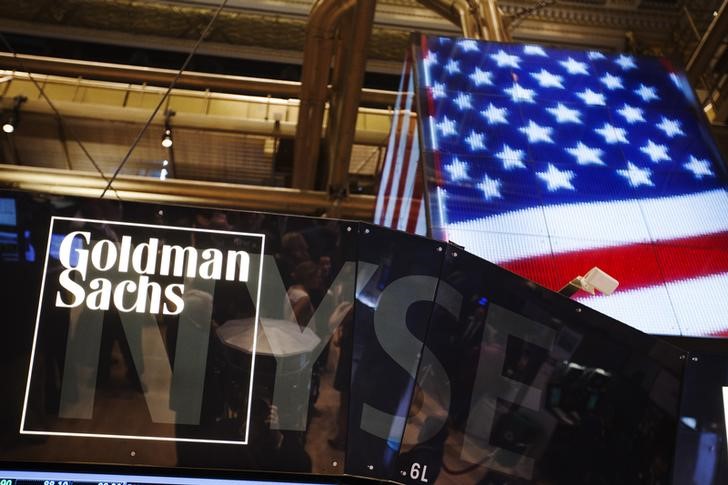This post was originally published on this site
https://i-invdn-com.investing.com/trkd-images/LYNXMPEI0H0GZ_L.jpg
Bank earnings have been hurt this quarter by weak trading volumes as the Federal Reserve slowed the pace of its asset purchases after an 18-month period in which it pumped liquidity into capital markets to ease the impact of the COVID-19 pandemic.
Goldman’s trading unit reported a lower profit in the fourth quarter compared to a year earlier as a more stable economy resulted in fewer swings in financial markets.
Its revenue from the global markets business, which houses the trading business and accounts for roughly a third of the bank’s overall revenue, fell 7% to nearly $4 billion, owing to weakness in both equities and fixed income trading.
Compared to a strong year-ago quarter when trading volumes skyrocketed, the bank said equity underwriting revenue fell 8% due to lower income from secondary stock offerings.
While fixed income net revenue remained unchanged from a year earlier at $1.86 billion, equities revenue fell 11%. Net revenues in global markets were also 29% lower than the third quarter of 2021.
Like its rivals, Goldman’s trading slowdown overshadowed a 45% jump in investment banking revenue to $3.80 billion as its top rainmakers raked in record fees from advising on some of the largest mergers, initial public offerings and deals involving special purpose acquisition companies.
Last week, the country’s largest bank JPMorgan Chase & Co (NYSE:JPM) too had faced the brunt of a slowdown in its trading arm, which sent its shares down as much as 6% as analysts expressed concern over its forecasts for future profitability.
Goldman’s net earnings applicable to common shareholders fell to $3.81 billion in the quarter ended Dec. 31 from $4.36 billion a year earlier.
Earnings per share fell to $10.81 from $12.08 a year earlier. Analysts on average had expected a profit of $11.76 per share, according to Refinitiv data.
Total net revenue rose 8% to $12.64 billion, driven by its investment banking and consumer and wealth management units.
A bright spot during the quarter was Goldman’s consumer bank, Marcus. While the unit is much smaller compared to traditional Main Street lenders, it grew 8%, driven by higher credit card and deposit balances.
Wage inflation and the cost of investing in new technology have also crimped banks’ profits. Goldman’s operating expenses jumped 23%, indicating significantly higher compensation and benefits costs.


